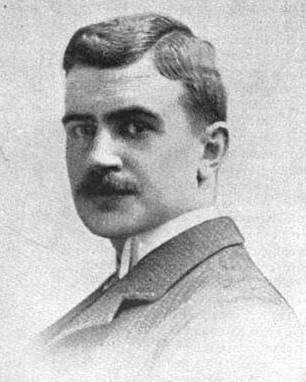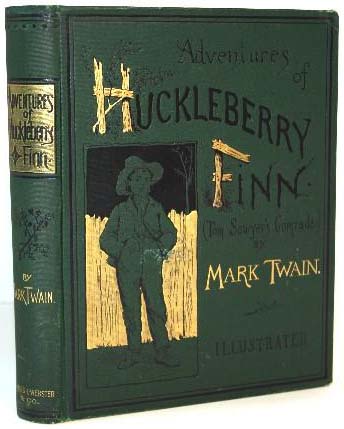Share via:
Edward Kemble – American illustrator, 1861-1933

Edward Windsor Kemble, an entirely self-taught artist of the pen- and-ink school, was already an established cartoonist with the Daily Graphic when Mark Twain offered him the substantial sum of $2,000 to illustrate the forthcoming subscription book The Adventures of Huckleberry Finn. One story has it that Kemble was offered the job because Twain had been amused by a Kemble cartoon depicting a homeowner fending off a subscription-book salesman.
The feet that the Sacramento-born Edward Kemble was the son of the founder of the Alta California, the newspaper that helped launch Twain’s career, also may have had something to do with Mark Twain’s choice. In either case, Kemble accepted Twain’s offer and so took his place as the first of dozens of artists who would illustrate Twain’s masterpiece.
The tone of Kemble’s 174 black-and-white illustrations for Huckleberry Finn is comic, emphasizing the lighter side of what is at times a profoundly dark novel. Most of Kemble’s illustrations add to Twain’s humor as they help tell the story; a handful edge over into the dramatic or sentimental, but none are dark or graphic. Kemble, well aware that in his day the text could get away with a great deal more explicitness than could the illustrations, goes out of his way to underplay the novel’s often violent and earthy reality of slavery, feuds, and deceptions. Twain himself was even more circumspect, censoring Kemble’s illustration of the lecherous King kissing a young girl.

Overall, Mark Twain was not pleased with Edward Kemble’s work on Huckleberry Finn. Though he declared some of Kemble’s drawings “most rattling good,” he later stated his aversion to the artist’s “black board outlines and charcoal sketches.” In dismissing Kemble’s illustrations, Twain overlooked the appropriateness of Kemble’s style to his own text, which, narrated by Huck, seems crude at first glance but turns out to be brilliantly crafted. In the same way, Kemble’s illustrations seem crude at first glance but turn out to be quite sophisticated. Like the text, the illustrations almost seem as if they could be the work of an unrefined boy, though of course they are not.
Edward Kemble illustrated some sixty books, including Pudd’nhead Wilson, Uncle Tom’s Cabin, Knickerbocker’s History of New York, and Mark Twain’s Library of Humor. He earned a reputation as an illustrator of African Americans and Southern life and consequently was chosen to illustrate the work of Joel Chandler Harris and African American poet Paul Laurence Dunbar. Similarly prolific as an illustrator of periodicals, Kemble published an estimated twelve thousand illustrations in magazines, including St. Nicholas. Perhaps his biggest popular success as a children’s illustrator was his coloring book featuring the African American Gold Dust Twins, the advertising symbols of Fairbank’s Washing Powder.
Illustrations of black caricatures like the Gold Dust Twins, as well as the artist’s publication of books with titles like Kemble’s Coons, have left him with a reputation for racism that his strong, if distorted, sympathy for African Americans cannot erase. However well deserved Edward Kemble’s racist reputation may be, his illustrations for Huckleberry Finn are unmatched in so many ways that he remains, after more than a century, the premier illustrator of what might be the most frequently illustrated novel in publishing history.
D.A.B.
Source: Children’s Books and their Creators, Anita Silvey.
